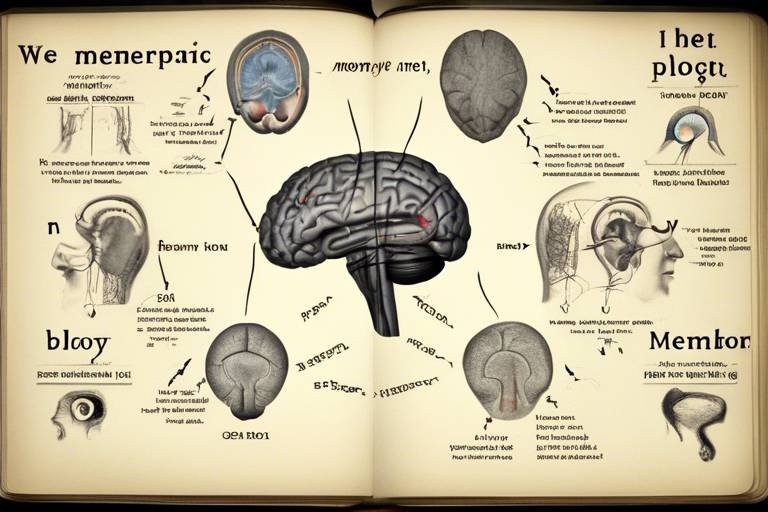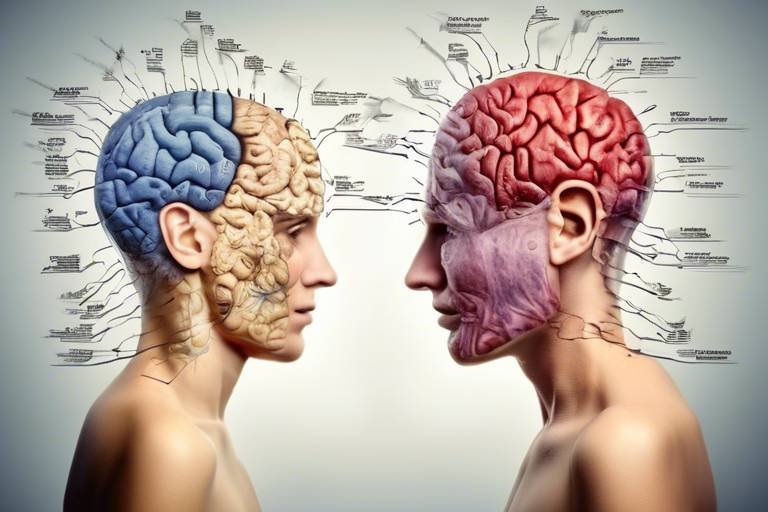The Role of Science in Mental Health Awareness
In today’s fast-paced world, mental health has become a crucial topic of discussion, yet many people still find it challenging to grasp its complexities. Science plays a pivotal role in unraveling the mysteries surrounding mental health issues, thereby enhancing our understanding and promoting awareness. Through rigorous research and innovative studies, scientists are shedding light on various mental disorders, helping us comprehend their causes, symptoms, and effective treatment options. This article will explore how scientific advancements contribute to mental health awareness and improve the lives of those affected.
Mental health encompasses our emotional, psychological, and social well-being. It influences how we think, feel, and act, affecting our ability to handle stress, relate to others, and make choices. Scientific research has significantly shaped our understanding of mental health, revealing that mental disorders are not merely personal failings but complex conditions influenced by a myriad of factors, including genetics, environment, and lifestyle choices. For instance, studies have shown that individuals with a family history of mental illness are at a higher risk of developing similar conditions, highlighting the need for a more nuanced understanding of mental health.
Research is the backbone of mental health awareness. It informs treatment methodologies, enhances public awareness, and influences policy-making in mental health care. Without scientific studies, we would remain in the dark about effective treatments and the societal implications of mental health disorders. Research helps to bridge the gap between clinical practices and the community by providing evidence-based information that can be utilized in educational campaigns and healthcare policies. For example, a recent study indicated that early intervention can significantly improve outcomes for individuals with mental health disorders, prompting policymakers to allocate more resources towards preventive measures.
When it comes to understanding mental health, various research methodologies come into play. These include:
- Quantitative Studies: These studies focus on numerical data and statistical analysis to identify patterns and correlations in mental health.
- Qualitative Studies: These involve detailed interviews and observations to gain insights into individuals' experiences with mental health issues.
- Clinical Trials: These are essential for testing new therapies and medications, providing vital information on their efficacy and safety.
- Epidemiological Research: This type of research looks at the distribution and determinants of mental health disorders in populations, helping identify risk factors.
Clinical trials are a cornerstone of mental health research. They play a crucial role in developing new therapies and medications for mental health conditions. By testing new treatments on diverse populations, researchers can evaluate their effectiveness and safety, ultimately leading to improved treatment options. For instance, recent clinical trials have explored the potential of psychedelic substances in treating severe depression, offering hope for patients who have not responded to traditional therapies.
Epidemiological studies are instrumental in identifying risk factors and prevalence rates of mental health disorders. These studies provide essential data that can inform public health initiatives and tailor interventions to specific populations. For example, research has shown that socioeconomic factors, such as poverty and unemployment, are closely linked to higher rates of mental health disorders. By understanding these correlations, communities can develop targeted strategies to address these issues and improve mental health outcomes.
The translation of scientific findings into practical applications is where the real impact lies. As researchers uncover new insights into mental health, these findings lead to improved awareness and better support systems for individuals suffering from mental health issues. For instance, the recognition of the importance of mental health in schools has prompted educational institutions to implement programs that promote emotional well-being among students. Such initiatives not only help in early identification of mental health issues but also foster a supportive environment where students feel safe to seek help.
Public awareness campaigns are vital in shaping perceptions of mental health. By leveraging scientific insights, these campaigns educate the public about mental health issues and work to reduce stigma. For example, campaigns that highlight the biological basis of mental disorders can help shift the narrative from viewing these conditions as personal weaknesses to understanding them as legitimate health issues.
To convey scientific findings about mental health effectively, messaging must be relatable and accessible. This involves using clear language, engaging visuals, and personal stories that resonate with diverse audiences. By framing mental health issues in a way that people can connect with, we can foster a greater understanding and encourage open conversations about mental health.
Community involvement is crucial in promoting mental health awareness. Local initiatives can leverage scientific research to foster understanding and support for mental health issues within communities. By organizing workshops, support groups, and educational programs, communities can create a culture of openness and acceptance, empowering individuals to seek help without fear of judgment.
Q: How does science help in understanding mental health?
A: Science provides a framework for understanding the biological, psychological, and social factors that contribute to mental health disorders, enabling more effective treatments and interventions.
Q: Why is research important for mental health awareness?
A: Research informs public awareness campaigns, enhances treatment methodologies, and influences policy-making, ultimately improving the lives of those affected by mental health issues.
Q: What role do community initiatives play in mental health awareness?
A: Community initiatives can leverage scientific research to educate the public, reduce stigma, and create supportive environments for individuals struggling with mental health issues.

Understanding Mental Health
Mental health is a term that encompasses our emotional, psychological, and social well-being. It plays a crucial role in how we think, feel, and act. Just like physical health, mental health is essential at every stage of life, from childhood and adolescence through adulthood. It's fascinating to consider how our mental state can influence our decisions and interactions with the world around us. Imagine navigating life with a foggy lens; that's often what it feels like for those struggling with mental health issues.
Scientific research has significantly shaped our understanding of mental health conditions. For instance, conditions like depression, anxiety, and bipolar disorder are not just fleeting feelings of sadness or worry; they are complex disorders that can alter brain chemistry and function. Researchers have uncovered that these conditions can arise from a mixture of genetic, biological, environmental, and psychological factors. This multifaceted nature highlights the importance of a comprehensive approach to treatment and awareness.
Moreover, the impact of mental health extends beyond the individual. It affects families, communities, and society as a whole. The World Health Organization (WHO) states that mental health disorders are among the leading causes of disability worldwide. This staggering statistic emphasizes the need for heightened awareness and understanding. When we grasp the significance of mental health, we can better empathize with those who face these challenges and advocate for better resources and support systems.
To further illustrate the importance of understanding mental health, consider this: if we think of mental health as a house, the foundation represents our emotional stability, the walls symbolize our coping mechanisms, and the roof signifies our social connections. If any part of this house is compromised, the entire structure can become unstable. Therefore, maintaining mental health is akin to ensuring that our house remains sturdy and safe.
In summary, understanding mental health is not just about recognizing the symptoms of mental disorders; it's about appreciating the complex interplay of various factors that contribute to mental well-being. As we continue to learn through scientific research, we can foster a more informed society that prioritizes mental health, reduces stigma, and promotes effective treatment options. It's a journey that requires collective effort, empathy, and a commitment to understanding the nuances of mental health.

The Importance of Research
Research is the backbone of understanding mental health. Without it, we would be navigating through a fog of uncertainty, trying to make sense of complex conditions that affect millions of people worldwide. Scientific studies not only enhance our knowledge but also inform treatment methodologies that can significantly improve the quality of life for individuals grappling with mental disorders. Imagine trying to fix a car without a manual; that’s what it’s like to approach mental health without the insights provided by research.
One of the primary roles of research in mental health is to raise public awareness. When scientific findings are disseminated effectively, they can shift perceptions, dismantle stigma, and encourage individuals to seek help. This is crucial because, for many, the journey to recovery begins with understanding that mental health issues are just as valid as physical ailments. Research acts as a bridge, connecting complex scientific data to everyday experiences, making it relatable and understandable for the general public.
Moreover, research influences policy-making in mental health care. Policymakers rely on evidence-based studies to make informed decisions about funding, resource allocation, and the development of mental health services. For instance, data from research can highlight the need for more mental health professionals in certain areas or the necessity of integrating mental health services into primary care settings. This ensures that mental health is prioritized, leading to a more holistic approach to healthcare.
In addition, the advancements in technology have opened new avenues for research methodologies. With tools like neuroimaging and genetic testing, researchers can explore mental health from a biological perspective, revealing how brain chemistry and genetics contribute to mental disorders. This scientific approach not only deepens our understanding but also paves the way for innovative treatments. For example, understanding the genetic predisposition to conditions like depression or anxiety can lead to targeted therapies that are more effective for individuals.
In summary, the importance of research in mental health cannot be overstated. It shapes our understanding, informs treatment, raises awareness, and influences policy. As we continue to uncover the complexities of mental health, the role of research will remain pivotal in fostering a society that understands, supports, and prioritizes mental well-being.
- Why is research important in mental health? Research helps us understand mental health conditions, informs treatment options, and raises public awareness.
- How does research influence mental health policy? Policymakers use research findings to make informed decisions about funding and resource allocation for mental health services.
- What types of research are conducted in mental health? Research in mental health can include clinical trials, epidemiological studies, and qualitative research methods.
- How does technology impact mental health research? Advances in technology allow for new research methodologies, such as neuroimaging, which provide deeper insights into mental health disorders.

Types of Research in Mental Health
When we dive into the complex world of mental health, it's crucial to understand that science employs various research methodologies to unravel the mysteries surrounding mental disorders. Each type of research plays a unique role in enhancing our understanding and improving treatment options. Broadly, we can categorize mental health research into three primary types: quantitative studies, qualitative studies, and clinical trials. Each of these approaches brings something valuable to the table, contributing to a more comprehensive view of mental health.
Quantitative research focuses on numerical data and statistical analysis. It seeks to quantify the prevalence of mental health disorders, examine correlations, and measure outcomes of various interventions. For instance, a quantitative study might analyze survey data from thousands of individuals to determine how many people experience anxiety disorders in a given population. This type of research is vital because it provides hard evidence that can influence public health policies and funding for mental health services.
On the other hand, qualitative research digs deeper into the human experience. It often involves interviews, focus groups, and open-ended surveys to gather insights about individuals' thoughts, feelings, and experiences regarding mental health. This type of research is essential for understanding the nuances of mental health conditions, as it captures the subjective experiences that numbers alone cannot convey. For example, a qualitative study may explore how stigma affects the willingness of individuals to seek help, offering a richer understanding of barriers to care.
Another critical component of mental health research is clinical trials. These trials are essential for testing new treatments, medications, and therapeutic approaches. They follow strict protocols to ensure safety and efficacy, often involving multiple phases to assess how well a new treatment works compared to existing options. Clinical trials not only advance our understanding of what treatments are effective but also pave the way for innovative therapies that can significantly improve the quality of life for those living with mental health conditions.
In addition to these primary types, epidemiological studies also play a significant role in mental health research. These studies investigate the distribution and determinants of mental health disorders in populations, helping identify risk factors and prevalence rates. By understanding who is most affected and why, public health initiatives can be tailored to address specific needs. For instance, if research shows that young adults are at a higher risk for depression, targeted awareness campaigns can be developed to reach this demographic.
Overall, the interplay of these research types creates a robust framework for understanding mental health. They collectively contribute to a more informed approach to treatment, policy-making, and public awareness. As we continue to explore the depths of mental health through scientific inquiry, we pave the way for advancements that can change lives and foster a more supportive society.

Clinical Trials
Clinical trials are the backbone of modern medicine, and when it comes to mental health, they play a crucial role in uncovering new treatments and therapies. Imagine being a detective, piecing together clues about how our brains work and why certain conditions affect us. That's exactly what researchers do in these trials. They gather volunteers, often those affected by mental health disorders, and test new medications or therapeutic approaches to see how they can improve symptoms or quality of life. This process is not just about finding a pill that works; it's about understanding the intricate web of factors that contribute to mental health conditions.
One of the most important aspects of clinical trials is their ability to provide evidence-based results. This means that the findings are grounded in rigorous scientific methods rather than anecdotal evidence or personal testimonies. For instance, a recent clinical trial on a new antidepressant might involve hundreds of participants, with half receiving the medication and the other half receiving a placebo. By comparing the outcomes, researchers can determine the medication's effectiveness and safety.
Additionally, clinical trials are categorized into phases, each designed to answer specific research questions:
- Phase I: Tests the safety and dosage of a new treatment in a small group of people.
- Phase II: Focuses on the effectiveness of the treatment, often involving a larger group.
- Phase III: Compares the new treatment against standard treatments in a large population.
- Phase IV: Conducted after the treatment is approved to monitor long-term effects.
Through these phases, clinical trials not only advance our understanding of mental health treatments but also pave the way for regulatory approvals that can change lives. For instance, a clinical trial may lead to the approval of a new therapy that significantly reduces anxiety symptoms, offering hope to millions who struggle with anxiety disorders. Moreover, the data collected from these trials can inform guidelines and policies that govern mental health care, ensuring that patients receive the best possible treatment options.
In summary, clinical trials are essential in the quest for better mental health treatments. They provide a structured approach to testing new therapies, ensuring that only the most effective and safe options make it to the public. This rigorous process not only enhances our understanding of mental health disorders but also contributes to a more compassionate and informed approach to mental health care.

Epidemiological Studies
Epidemiological studies play a pivotal role in the field of mental health by helping to unravel the complexities surrounding various mental disorders. These studies are essentially the backbone of public health research, focusing on the distribution, patterns, and determinants of mental health conditions within populations. By analyzing data from diverse groups, researchers can identify trends, risk factors, and prevalence rates, which are crucial for developing effective interventions and policies.
One of the fascinating aspects of epidemiological research is its ability to paint a broad picture of mental health issues across different demographics. For instance, researchers might examine how factors like age, gender, socioeconomic status, and geographical location influence the incidence of disorders such as depression, anxiety, or schizophrenia. This kind of analysis not only sheds light on who is most affected but also helps in understanding the social and environmental contexts that contribute to these conditions.
Moreover, epidemiological studies often utilize a variety of methodologies to gather data. Some of the common approaches include:
- Surveys: These are often used to collect self-reported data on mental health symptoms and behaviors from a large number of participants.
- Longitudinal Studies: These studies track the same individuals over time, providing insights into how mental health conditions develop and change.
- Cross-Sectional Studies: These provide a snapshot of mental health status in a population at a single point in time, allowing for comparisons across different groups.
The findings from these studies are invaluable. They inform public health initiatives, guide policy decisions, and help allocate resources effectively. For example, if a study reveals a high prevalence of anxiety disorders among teenagers in urban areas, public health officials can develop targeted programs to address this issue, such as school-based mental health services or community outreach initiatives.
Furthermore, epidemiological studies have the potential to highlight disparities in mental health care. They can reveal how certain populations may be underserved or face barriers to accessing treatment. This is particularly important for marginalized groups who may experience stigma or discrimination, as it emphasizes the need for tailored approaches to mental health care that consider cultural and social factors.
In conclusion, epidemiological studies are not just about numbers and statistics; they are about understanding the human experience of mental health. By identifying trends and risk factors, these studies contribute significantly to the broader conversation about mental health awareness, ultimately leading to better support systems and improved treatment options for those in need.

Impact of Scientific Findings
When we talk about the on mental health, we're diving into a world where research and real-life experiences collide to create a more informed society. Imagine walking into a room filled with people who were once shrouded in stigma and misunderstanding about mental health issues. Thanks to scientific research, that room is now filled with awareness, empathy, and a deeper understanding of what individuals with mental disorders face daily. Scientific findings have the power to transform perceptions, leading to changes in how society responds to mental health challenges.
One of the most significant impacts of scientific research is the way it informs public policy. Policymakers rely on data from studies to craft legislation that supports mental health initiatives. For instance, when research highlights the prevalence of anxiety disorders among teenagers, it can lead to increased funding for school-based mental health programs. This is not just a theoretical exercise; it directly influences how resources are allocated, ensuring that help reaches those who need it most. Moreover, when people see that their government is taking action based on scientific evidence, it fosters a sense of trust and encourages individuals to seek help without fear of judgment.
Additionally, scientific findings play a crucial role in shaping treatment methodologies. By identifying effective therapies through rigorous studies, healthcare providers can offer evidence-based treatments that improve patient outcomes. For example, breakthroughs in cognitive-behavioral therapy (CBT) have been shown to significantly reduce symptoms of depression and anxiety. As these findings make their way into clinical practice, patients benefit from more effective treatment options tailored to their needs.
Furthermore, the impact extends beyond just treatment; it also enhances public awareness campaigns. When scientific insights are translated into relatable messaging, they resonate with the community. Campaigns that incorporate real data about mental health statistics, such as the number of people affected by depression worldwide, help demystify these conditions. This approach not only educates but also empowers individuals to share their experiences. When people see that they are not alone, it creates a ripple effect of support and understanding.
To illustrate the impact of scientific findings, consider the following table that summarizes key areas where research has made a difference:
| Area of Impact | Description |
|---|---|
| Public Policy | Informs legislation and funding for mental health programs based on research data. |
| Treatment Methodologies | Guides the development of evidence-based therapies for various mental health conditions. |
| Public Awareness | Shapes campaigns that educate the public and reduce stigma surrounding mental health. |
| Community Support | Encourages local initiatives that foster understanding and support for mental health issues. |
In conclusion, the impact of scientific findings on mental health awareness is profound and multifaceted. By bridging the gap between research and real-world application, we can foster a more compassionate society that recognizes the importance of mental health. As we continue to unravel the complexities of the human mind through science, we pave the way for a future where mental health is prioritized, stigma is diminished, and individuals feel empowered to seek the help they need.
- How does scientific research improve mental health treatment?
Scientific research identifies effective therapies and medications, ensuring that treatment options are evidence-based and tailored to individual needs. - What role does public awareness play in mental health?
Public awareness campaigns educate communities, reduce stigma, and encourage individuals to seek help, creating a supportive environment for those affected by mental health issues. - How can I get involved in mental health advocacy?
You can participate in local initiatives, support awareness campaigns, and educate yourself and others about mental health issues.

Public Awareness Campaigns
Public awareness campaigns play a crucial role in bridging the gap between scientific research and everyday understanding of mental health issues. These campaigns are not just about sharing facts but are designed to resonate with people's emotions and experiences. Imagine standing in a crowded room, and someone starts talking about mental health; suddenly, the atmosphere shifts. People lean in, listening intently, because they feel connected to the topic. This is the power of effective public awareness campaigns.
Scientific insights are the backbone of these campaigns, providing the evidence needed to challenge misconceptions and break down the stigma surrounding mental health. For instance, campaigns often highlight statistics that reveal the prevalence of mental health disorders, making it clear that these issues affect millions of individuals, regardless of age, gender, or background. When people see that mental health conditions are common, it becomes easier to discuss them openly. This shift in perception is essential in creating a supportive environment for those who are struggling.
Furthermore, public awareness campaigns utilize various media platforms to reach diverse audiences. From social media to community events, the goal is to engage people where they are. For example, a campaign might use a series of eye-catching infographics on Instagram to share vital information about anxiety and depression. These visuals can be incredibly impactful, making complex scientific data more digestible and relatable. The use of storytelling in these campaigns also helps to humanize mental health issues, allowing individuals to see themselves in the narratives being presented.
One of the most significant challenges in mental health awareness is combating stigma. Many campaigns have adopted a strategy of using personal stories to illustrate the lived experiences of those with mental health conditions. By doing so, they not only educate the public but also foster empathy. When someone hears a story about a person overcoming their struggles with mental illness, it can inspire hope and encourage others to seek help. This kind of messaging is vital because it shifts the narrative from one of fear and misunderstanding to one of support and resilience.
To further enhance the effectiveness of these campaigns, collaboration with mental health professionals and organizations is essential. By partnering with experts, campaigns can ensure that the information being disseminated is accurate and up-to-date. Additionally, these collaborations can lead to the development of community-based initiatives that provide resources and support for individuals in need. For example, a local campaign might offer workshops or support groups that reflect the scientific findings related to mental health, giving community members the tools they need to navigate their mental health journeys.
In conclusion, public awareness campaigns are a powerful tool in the fight for mental health awareness. They not only educate the public but also create a culture of understanding and support. By using scientific research as a foundation, these campaigns can effectively challenge stigma, promote empathy, and ultimately lead to improved mental health outcomes for individuals and communities alike.
- What is the goal of public awareness campaigns for mental health?
The primary goal is to educate the public about mental health issues, reduce stigma, and encourage individuals to seek help. - How do these campaigns utilize scientific research?
They use data and findings from studies to inform their messaging, ensuring that the information shared is accurate and relevant. - Can anyone participate in these campaigns?
Absolutely! Community members, mental health professionals, and organizations can all get involved to help spread awareness.

Effective Messaging
When it comes to mental health awareness, is absolutely crucial. It's like the bridge that connects scientific research with the everyday lives of individuals. Imagine trying to cross a river without a bridge; you'd be stuck on one side, unable to reach the other. Similarly, if scientific findings about mental health aren't communicated effectively, the valuable insights they offer may never reach those who need them the most.
One of the key elements of effective messaging is ensuring that the information is not only accurate but also accessible and relatable. This means using language that resonates with a diverse audience. For instance, technical jargon can alienate people who are not familiar with the scientific community. Instead, utilizing clear and straightforward language can help demystify complex concepts, making them easier to understand. Think of it like explaining a complicated recipe: if you use too many fancy terms, your friends might just give up and order takeout instead!
Moreover, visuals play a significant role in enhancing the effectiveness of messaging. Infographics, videos, and illustrations can break down complicated information and present it in a digestible format. For example, a simple infographic showing the signs of anxiety or depression can be much more impactful than a lengthy article filled with statistics. People are naturally drawn to visuals, and when combined with compelling narratives, they can evoke emotions and foster a deeper connection to the subject matter.
Another important aspect is the emotional appeal. Stories that highlight personal experiences with mental health challenges can create a sense of empathy and understanding. When individuals see themselves reflected in someone else's journey, it can inspire hope and encourage them to seek help. This is why many public awareness campaigns incorporate testimonials and real-life stories; they serve as a powerful reminder that no one is alone in their struggles.
To summarize, effective messaging in mental health awareness hinges on the following key strategies:
- Clarity: Use simple, straightforward language.
- Visuals: Incorporate infographics and videos to enhance understanding.
- Emotional Connection: Share personal stories to foster empathy.
By leveraging these strategies, we can create a more informed society that understands the importance of mental health. This, in turn, can lead to better support systems and resources for those affected by mental health disorders.
Q: Why is effective messaging important in mental health awareness?
A: Effective messaging ensures that scientific findings are communicated in a way that is accessible and relatable, helping to bridge the gap between research and public understanding.
Q: How can visuals enhance mental health messaging?
A: Visuals, such as infographics and videos, can simplify complex information, making it easier for people to grasp important concepts and engage with the content.
Q: What role do personal stories play in mental health awareness?
A: Personal stories create emotional connections and foster empathy, encouraging individuals to seek help and understand that they are not alone in their struggles.

Community Engagement
Community engagement is a vital aspect of addressing mental health issues, as it fosters understanding, support, and collective action. Imagine a neighborhood where everyone is aware of mental health challenges; it becomes a safe haven for those struggling, where they can seek help without fear of judgment. By harnessing the power of community, we can create environments that are not only supportive but also proactive in addressing mental health concerns.
One of the most effective ways to enhance community engagement is through local initiatives that leverage scientific research. For instance, workshops and seminars can be organized to educate community members about mental health disorders, their symptoms, and available treatments. These events can utilize evidence-based findings to dispel myths and reduce stigma surrounding mental health issues. By presenting relatable stories and data, communities can connect on a personal level, making the information resonate more deeply.
Moreover, collaboration between mental health professionals and local organizations can amplify outreach efforts. Schools, workplaces, and community centers can serve as hubs for mental health awareness, providing resources and support systems. For example:
- School Programs: Implementing mental health education in schools can equip young people with the knowledge and tools to manage their mental well-being.
- Workplace Initiatives: Employers can create mental health days, offer counseling services, and promote a culture of openness regarding mental health.
- Community Support Groups: Establishing support groups can provide a safe space for individuals to share their experiences and find solidarity among peers.
Additionally, utilizing social media platforms to spread awareness can reach a wider audience. Campaigns that encourage individuals to share their stories can humanize mental health issues, making them more relatable and less stigmatized. When people see their neighbors and friends discussing their struggles, it normalizes the conversation around mental health, encouraging others to seek help.
Ultimately, community engagement is about building connections and fostering a culture of understanding. It’s about creating a tapestry of support where everyone plays a role in mental health awareness. By working together, communities can not only improve individual lives but also enhance overall societal well-being.
- What is community engagement in mental health? Community engagement in mental health refers to the active involvement of community members in initiatives aimed at promoting mental health awareness, reducing stigma, and providing support to those in need.
- How can I get involved in community mental health initiatives? You can get involved by participating in local workshops, volunteering with mental health organizations, or advocating for mental health resources in your community.
- Why is community engagement important for mental health? Community engagement is crucial because it fosters understanding, reduces stigma, and creates supportive environments where individuals feel safe to seek help.
Frequently Asked Questions
- What is mental health and why is it important?
Mental health encompasses our emotional, psychological, and social well-being. It influences how we think, feel, and act, and plays a crucial role in how we handle stress, relate to others, and make choices. Understanding mental health is vital because it affects every aspect of our lives, from relationships to productivity.
- How does scientific research contribute to mental health awareness?
Scientific research provides evidence-based insights that help us understand mental health conditions better. It informs treatment approaches, enhances public awareness, and influences policies that aim to improve mental health care. Without research, many misconceptions and stigmas surrounding mental health would persist.
- What types of research are conducted in the field of mental health?
There are several types of research in mental health, including quantitative studies, qualitative studies, clinical trials, and epidemiological research. Each of these methodologies contributes unique insights, from statistical data on prevalence rates to personal experiences that shape our understanding of mental health issues.
- Why are clinical trials important for mental health treatment?
Clinical trials are essential as they test new therapies and medications for effectiveness and safety. They play a pivotal role in advancing treatment options, ensuring that individuals suffering from mental health conditions have access to the latest and most effective interventions.
- How do epidemiological studies impact mental health awareness?
Epidemiological studies help identify risk factors and prevalence rates of mental health disorders. This data is crucial for public health initiatives, allowing for targeted interventions and raising awareness about specific issues affecting different populations.
- What role do public awareness campaigns play in mental health?
Public awareness campaigns are designed to educate the community about mental health issues, reduce stigma, and promote understanding. By leveraging scientific insights, these campaigns ensure that the information shared is accurate, relatable, and impactful, reaching diverse audiences effectively.
- How can communities engage with mental health research?
Communities can engage with mental health research by participating in local initiatives, attending workshops, and collaborating with mental health organizations. By fostering dialogue and support, communities can create environments that better understand and address mental health challenges.



















